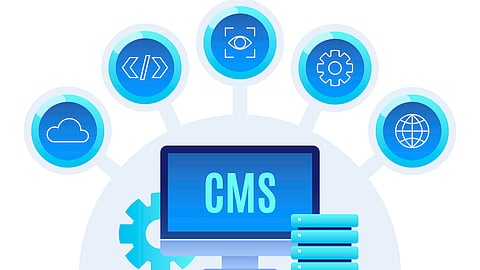Five Reasons Developers Love Headless CMS
Written by: Rashmi
Years ago, traditional CMSs were winning the world with their services. They were a bit too tedious in the process but they did the task in the end. But again, that was years ago.
The demands of the market have now changed drastically. There are multiple channels where content gets posted. And traditional CMSs can not handle these new age demands without taking a lot of your time.
Enter Headless CMS – a new-age content management system born out of the new digital era. This CMS offers the omnichannel experience to make content publishing easier than ever.
And that’s not it. A headless CMS has not just made the task of editors and writers easy, it has also given more freedom to the developers. That’s what we are going to talk about - why developers love headless CMS. But let’s begin with the basics.
What is a Headless CMS?
Headless CMS is a type of content management system wherein the front end and back end are mutually exclusive. This allows the users to publish the same content on different channels or devices.
Let’s understand this with a simple example. With a traditional CMS, writers can create a story and then publish it straight to the website or blog. But this is restricted to a particular website only. On the other hand, a headless CMS allows the writer to create content and then post it to multiple channels like Facebook, website, or app. It cuts off the head (the front end) from its body (the back end), and hence a headless CMS.
Five Reasons Developers Love Headless CMS
Leads to Faster Operations
The major feature of headless CMS is that it allows back-end and front-end developers to work parallelly. They just need to establish the requirements’ layout in the beginning. After that, there is no dependency. This automatically helps in faster completion of the work.
The content creators can work at their pace and the developers can focus on their projects without going back and forth between teams.
Enables Easy Maintenance and Updates
Maintenance and updates are not troublesome for developers, but they can become exhausting. And since the new age is fast and upgrades come every other day, it is essential to have a CMS that supports this basic task. Headless CMS turns out to be a winner since it can easily adjust content without hampering the back end.
With a solid API, developers can easily update and maintain the project to remove any glitch or add new features, ensuring better a user experience.
Supports the Developer-first Approach
When developers are dealing with the traditional CMS, they have to dive into complex codes to present the data. But with a headless CMS, they get the chance to take their mind off from codes and put their creativity into visual aesthetics, user experience, and accessibility of the website.
The developer-first approach also gives them the freedom to explore new tools by integrating them with the API.
Increases Security and Safety
Security is one of the primary concerns of every business running digitally. Developers have to ensure that the data stays safe. This is why they prefer headless CMS. Since there is no direct connection with the backend, the chances of a data breach become almost negligible.
Moreover, such CMSs also allow an extra layer of security by offering authentication services and security protocols.
Offers Flexibility
Last but not least is the freedom to be flexible with options. Headless CMS allows developers to break away from the specific plugins of a traditional CMS. Instead, it lets them integrate any third-party tool via APIs to have a wide variety of options. They can also switch between the tools and stay on the top with the market trends.
Moreover, developers can also innovate with the designs without having to re-implement the whole CMS.
Ready to try a headless CMS but don’t know where to begin? Quintype is here to help. Get ready to upgrade your old CMS.

